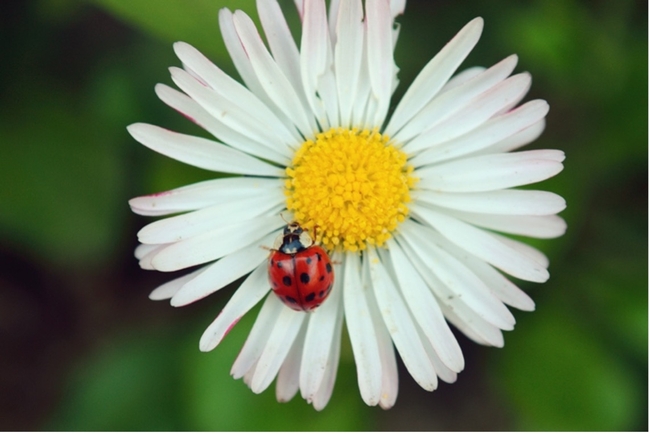What do Earth Day and Integrated Pest Management (IPM) have in common? They both seek to protect the beautiful planet we all share! IPM is an environmentally friendly way to manage pests, focusing on nonchemical control methods (cultural, physical, and biological) rather than relying solely on pesticides. The main goal is to reduce pests but to achieve that without harm to people, water, soil ecosystems, beneficial insects, and wildlife.
This Earth Day, see how you can use IPM to protect the environment. Here are some ideas:
Plant flowers
Flowering plants, especially those native to California, are not only beautiful but incredibly important for pest control! Natural enemies, also called beneficial insects or good bugs, feed on pollen and nectar from flowering plants. In addition, flowering plants provide them with a place to lay eggs and hide from predators. Natural enemies, which include lady beetles (ladybugs), lacewings, soldier beetles, assassin bugs, spiders, parasitic wasps, and even some mites, feed on pests in the garden and landscape. They can naturally control pest problems, reducing the need for pesticides.
You can protect and encourage natural enemies by avoiding the use of broad-spectrum pesticides that kill them, managing ants, and planting an array of flowering plants. Choose plants well adapted to your area and choose species or cultivars that bloom at different times of the year to provide natural enemies with food year-round.
Water wisely
Giving your plants enough water is essential for their survival, but ensuring they have enough and not too much can be very important for IPM too. When plants are water-stressed, they are often more susceptible to pests. When plants are overwatered, they can also be prone to more pests. It is a delicate balance but ensuring your plants get the water they require (which will vary by species or plant type) is a great way to minimize pests problems and promote healthy plants that can better tolerate pest feeding. Consider planting drought-tolerant plants that are less likely to experience water stress.
Understand pesticides
Certain pesticides can harm people, nontarget organisms, aquatic wildlife, and natural enemies when used improperly. It is important to understand when pesticides might be needed, and how to apply them in ways that minimize risks to people and the environment. Use less toxic pesticides whenever possible. Always read the product label for information on when and how to apply, which plants or pests you can apply for, and how much to use. Wear personal protective equipment (PPE) and take caution not to allow the pesticide to runoff or drift. Also, dispose of unused pesticide at a household hazardous waste disposal site. Enter your zip code here to find a location near you.
Use nonchemical tools
There are many, many ways to prevent and control pests without the use of pesticides. In IPM, we use a variety of tools to achieve this. Tools might include mulch, soil solarization, or garden hoes instead of herbicides for weed control; protective coverings, netting, screens, or weather-stripping to keep pests off plants and out of the home; or traps to control vertebrate pests like rats without the use of rodenticides. See any of the UC IPM Pest Notes to read what tools and nonchemical control methods work to manage indoor or outdoor pests.
Happy Earth Day!
